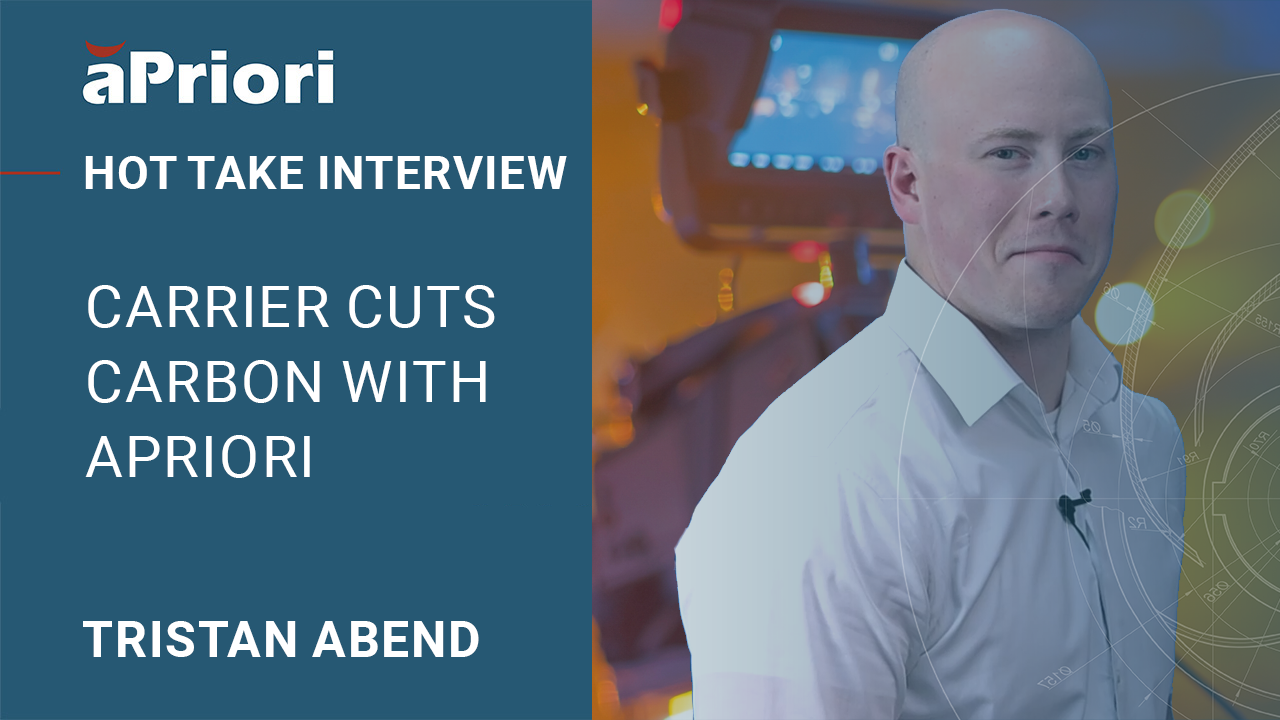Leah Archibald: Let’s talk about the sustainability piece.
Tristan Abend: Sure.
Leah Archibald: Beause this is a little bit newer, and you have been using the aPriori tool to do some should-carbon as well. Tell me about that.
Tristan Abend: Yeah. And it’s a new term, right? Up until this year, I don’t think a lot of us would’ve heard of that. So I think what it started was, is last year, we were approached by aPriori, they had a new sustainability module. At that time, we were really going after the gigaton goal, which we still are but are well on our way to meeting ahead of time, from a 2030 perspective. And currently, what we’re actually looking at is, when we evaluate the sustainability module, we fell in love with it.
It was a simple solution for us to look at embodied carbon in the beginning stages, where you will find you had the most little data on carbon. And that goes not only for us, but for most companies. Scope 3 is a very hard thing to define for a lot of companies, yet it’s the biggest part of your emissions profile. So when we looked at the sustainability module, we decided to go for it.
We spent a year in trial, and now this year, we’re going forward and we’re actually implementing it fully across the organization. And we’re gonna look at it from two use cases; you had the beginning phase of design, and then you had the back-end when you’re actually wanting to do an LCA in EPD.
Leah Archibald: And what have you seen so far? Have you rolled out any trials for the two use cases?
Tristan Abend: Yeah. We break down the sustainability KPIs in two ways. Really, I look at it from a hard savings and a soft savings. The hard savings is true dollar figures. So from a design standpoint, on a single part alone, we were able to save almost $100,000 a year from a material change, but also, we were able to significantly reduce our carbon by several tons a year. And that’s just one part of a greater product. And then when we look on a product level, we were able to actually save what I call time savings or soft savings. We were able to go from a process to create an EBD of about 18 months, and we were able to crank that down to 12 months. And we’re actually getting it even faster as we go along, as we build up more data. So in those two ways alone, we’ve seen huge savings and productivity and cost back to the organization for us to invest more time in other things and to better ourselves.


